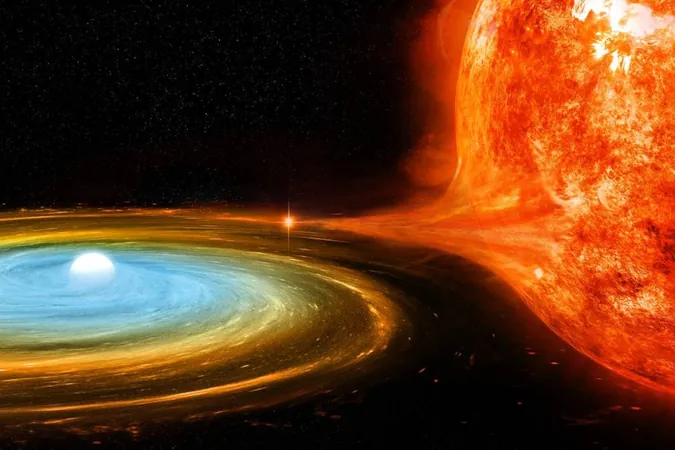
The Blaze Star is About to Burst: What You Need to Know!
2025-03-28
Author: Yu
Sky-watchers around the globe were left underwhelmed last night when a much-anticipated nova explosion in the binary star system T Coronae Borealis—affectionately known as the Blaze Star—failed to materialize. But don't lose hope just yet! This celestial marvel is still primed for an explosive display, which could unfold at any moment.
The T CrB binary system, renowned for its stunning eruptions occurring roughly every 79 years, has become the center of attention for astronomers eager for an extraordinary astronomical show. A study published last year sparked excitement by predicting that the Blaze Star would erupt on March 27, and although that date passed without incident, there are still two critical dates on the horizon: November 10, 2025, and June 25, 2026.
The historical record shows that the T CrB nova was first documented over 800 years ago, with its last eruptions occurring in 1866 and 1946. The current window for a possible nova explosion opened in February 2024, but the exact timing remains elusive. Notably, astronomers have observed peculiar behavior from the Blaze Star in recent years, reminiscent of its actions leading up to previous eruptions.
Astronomer Jean Schneider of the Paris Observatory, in an insightful publication with the Research Notes of the American Astronomical Society, proposed a mathematical model based on the star system's historical explosion cadence and orbital dynamics. His findings suggest that T CrB explodes once every 128 orbits, with each orbit taking approximately 227 days. Although there's speculation about exact timing, the explosive moment could arrive at any point in the coming months.
Sitting in the Corona Borealis constellation, T CrB comprises a white dwarf—essentially the remnants of a stellar corpse the size of Earth but with a mass akin to our Sun—and a massive red giant star, roughly 1.12 times our Sun’s mass, that orbits the white dwarf every 227 days. Remarkably, the two stars exist only 0.54 astronomical units apart—the same distance that lies between the Sun and Venus!
As the red giant spirals closer to its companion, its outer layers are gradually stripped away by the white dwarf's gravitational might, creating an accretion disk of material that feeds into it. Eventually, this accumulation of hydrogen generates pressure and heat, culminating in a spectacular thermonuclear explosion that ejects the atmosphere of the red giant into space. Unlike cataclysmic supernovae that obliterate a star, the white dwarf survives, illuminating the night sky with a brilliant flash visible to the naked eye.
Currently, T CrB is dim and invisible to observers, with a specific magnitude of +10. However, during its expected eruption, this celestial body could brighten up to a magnitude of +2, nearly rivalling the brilliance of the North Star! While the explosion will be fleeting, the afterglow could shimmer in our skies for a week, providing a breathtaking experience for skywatchers.
So grab your telescopes and prepare your cameras! We may soon witness a spectacular event that has been thousands of years in the making. Stay tuned, as the mysteries of the cosmos are only just beginning to unfold!



 Brasil (PT)
Brasil (PT)
 Canada (EN)
Canada (EN)
 Chile (ES)
Chile (ES)
 Česko (CS)
Česko (CS)
 대한민국 (KO)
대한민국 (KO)
 España (ES)
España (ES)
 France (FR)
France (FR)
 Hong Kong (EN)
Hong Kong (EN)
 Italia (IT)
Italia (IT)
 日本 (JA)
日本 (JA)
 Magyarország (HU)
Magyarország (HU)
 Norge (NO)
Norge (NO)
 Polska (PL)
Polska (PL)
 Schweiz (DE)
Schweiz (DE)
 Singapore (EN)
Singapore (EN)
 Sverige (SV)
Sverige (SV)
 Suomi (FI)
Suomi (FI)
 Türkiye (TR)
Türkiye (TR)
 الإمارات العربية المتحدة (AR)
الإمارات العربية المتحدة (AR)